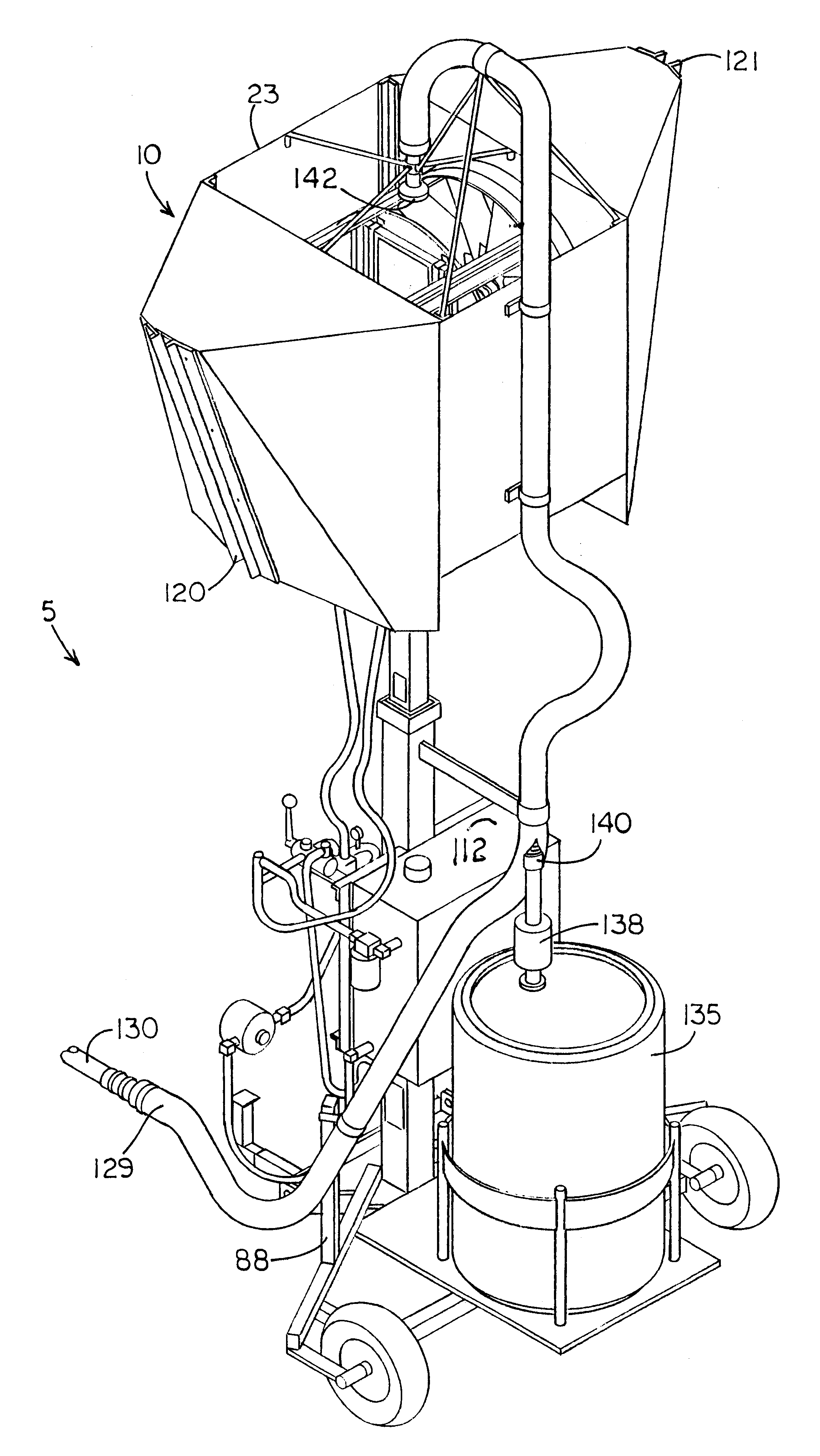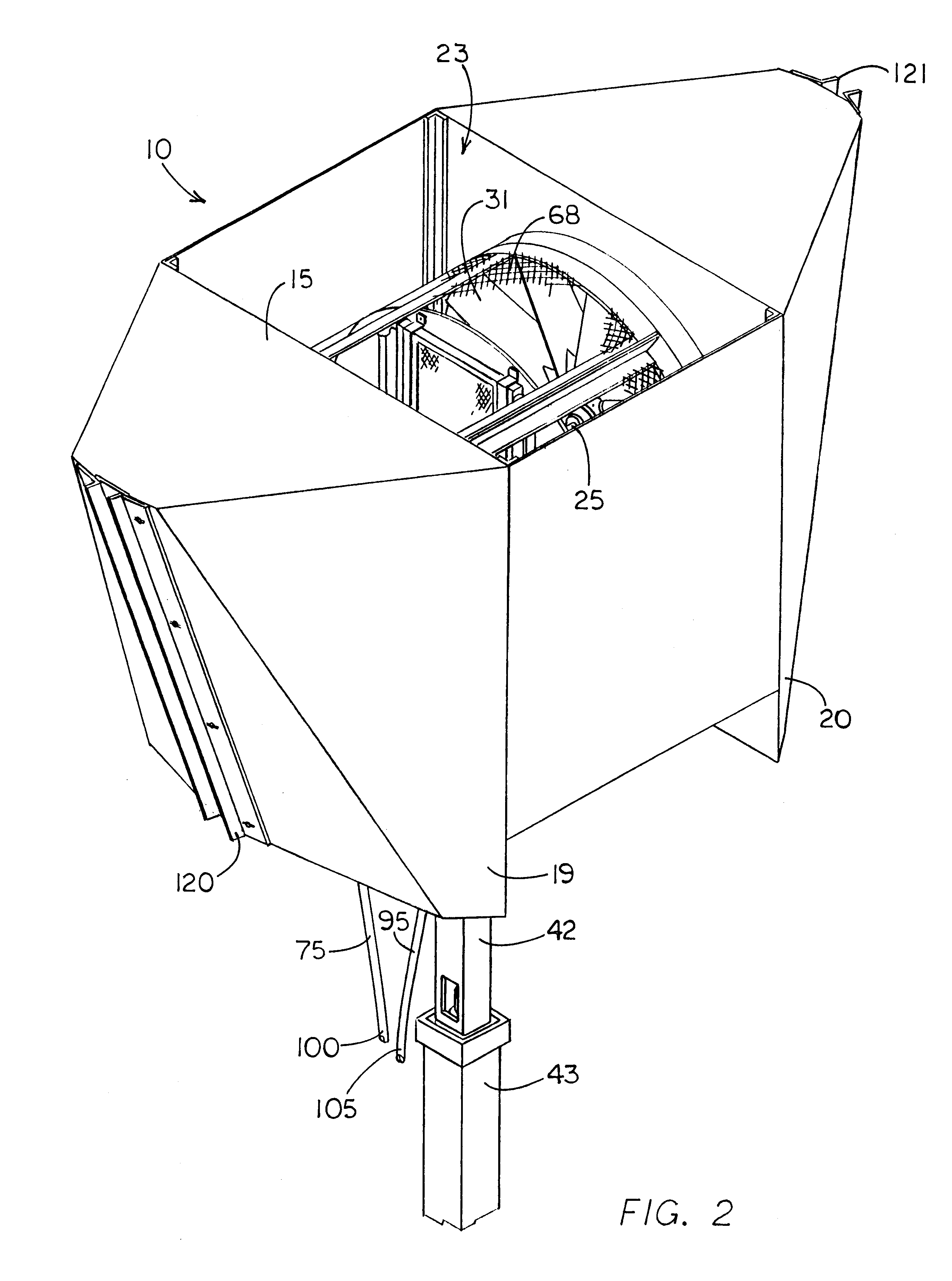Method and apparatus for an agricultural air handler
a technology of agricultural air handler and air handler, which is applied in the direction of non-positive displacement fluid engine, liquid fuel engine components, roads maintenance, etc., can solve the problems of unappealing split in the outer flesh and skin of the fruit, unappealing splits not only unsightly, and can pose a severe threat to the mature and ripe cherry, etc., to achieve economic and compact effect and large area
- Summary
- Abstract
- Description
- Claims
- Application Information
AI Technical Summary
Benefits of technology
Problems solved by technology
Method used
Image
Examples
Embodiment Construction
The invention provides a method and apparatus for an agricultural air handler. Preferred embodiments of the present invention are shown in FIGS. 1 through 15. FIG. 1 depicts the agricultural air handler 5 in a preferred configuration that is suited for the drying or removal of rain water from tree crops, especially cherries.
The shroud 10 of the air handler 5, as shown in FIG. 1 and detailed in FIG. 3, is preferably fabricated from galvanized sheet metal of a standard gauge of approximately 18, such that the shroud exhibits a minimum of vibration when the air handler is in use. The shroud includes a top 15, a bottom 17, a first end 19 and a second end 20, and an air inlet 23. The air inlet is located proximate the top of the shroud. The location of the air inlet at the top of the shroud allows the air handler to draw air from above the shroud and to minimize the circulation of air back into the air inlet after the air is expelled from the shroud.
As shown in FIGS. 2, 4, 5, 6, 9 and 10...
PUM
 Login to View More
Login to View More Abstract
Description
Claims
Application Information
 Login to View More
Login to View More - R&D
- Intellectual Property
- Life Sciences
- Materials
- Tech Scout
- Unparalleled Data Quality
- Higher Quality Content
- 60% Fewer Hallucinations
Browse by: Latest US Patents, China's latest patents, Technical Efficacy Thesaurus, Application Domain, Technology Topic, Popular Technical Reports.
© 2025 PatSnap. All rights reserved.Legal|Privacy policy|Modern Slavery Act Transparency Statement|Sitemap|About US| Contact US: help@patsnap.com



